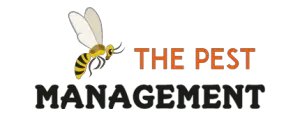Are you seeing pieces of wood chewed off different areas of your home, nearby trees, telephone poles or fences? Do you see wasps in the area as well? Why do wasps like wood?
Do wasps actually eat the wood? Are there any specific kinds of wasps that target wood? Would you like to find out how many different kinds of wasps chew on wood?
In this article, we will find out why do wasps like wood.
Why Do Wasps Like Wood?
Wasps enjoy wood because of the protection it provides and its capability of being able to build nests with it. They can hide inside wooden decks and create very comfortable locations to build nearby nests.
Wasps are capable of chewing through wood fibers and combining it with their saliva to create a pulp that is easily formed into any shape that they would like. They will use the wood fibers to create their nests over the spring and summer.

Why Are Wasps Eating My Wood?
Wasps are not eating your wood; they are merely chewing on it to build materials for their nest. They are using wood pulp mixed with their saliva to create the perfect material that will survive through the seasons in order for their nests to remain structurally sound.
If you see wasps chewing on the wood around your property, it means that they have probably removed or exhausted most of the wood that was available in the previous location.
Now they have arrived to your home in order to find more materials to continue building their intricate nest that will take them at least four to six months.
What Kind of Wasp Likes Wood?
The most common type of wasp that likes wood is the horntail. They are also referred to as wood wasps. There are many kinds of horntails that are wood-boring insects.
They belong to the family Siricidae. They are attracted to the wood inside dead or dying trees. Horntails prefer conifer trees, but will also take on any type of wood that is available around your property that is easy for them to chew on.
What to Put on Wood to Stop Wasps?
If you would like wasps to stop chewing on the wood around your property, you can try different methods. There is one particular method that we have tried using cloves and oranges.
We have inserted the cloves into the orange in or on wooden surfaces around the home. We have also tried peppermint oil and dish soap.
We have sprayed dish soap, water and peppermint oil together on top of wood surfaces and noticed how why have completely stopped chewing on the wood.

What Kind of Wasps Burrow Into Wood?
In nature you will find many wood wasps or horntail wasps as they are specifically known to be most interested in boring into wood. These types of wasps enjoy burrowing into the wood of trees without being noticed.
Once the timber is harvested, you will notice that there are larvae of these wasps developing inside it. Wood-boring wasps such as horntails do not sting humans that are not considered dangerous. They do however, destroy the integrity of the wood in question.
Why Do Wasps Strip Wood?
Wasps like to strip wood from different areas in order to build materials that can form into their nest.
What they need to do is look for wood that is easy to rip off or chew on such as dead or dying trees. Otherwise they will look for materials made of wood such as:
- Fences
- Poles
- Decks
- Patios
- Lumber
- Firewood
Wasps will combine their saliva with the wood to create a pulp that is easy for them to mold into any shape they want to complete their nests.
Do Wasps Lay Eggs in Wood?
Yes. There are species of female wasps that enjoy laying eggs deep inside wood. Most of these types of wasps are known as horntails. They are also referred to as wood wasps.
The larvae are protected and develop underneath the bark in the cambium and tunnel. They follow into the sapwood and heartwood because a female is able to insert her long and flexible ovipositor deeper into the wood than most other species of wasps.

How Do Wasps Make Their Paper Nests?
Wasps make their paper nest by relying on the queen first and foremost. She will try to pick a site where it is near wood that is available for her to begin building her nest.
The wood will be chewed on with her mandibles. She scrapes the wood off these dead trees, decks or fences. She’s looking for the softest wood possible. She can also use cardboard.
In time, worker wasps will learn from the queen and continue on scratching, clawing and chewing on these strips of wood while combining with their saliva to build enough pulp as their best building material for their nest.
14 Wasps That Chew On Wood
The following types of wasps are most commonly found chewing on wood. Keep in mind that these creatures are not able to extract cellulose in wood to ingest it the way termites do. Therefore, wasps do not eat wood.
Here is our list of the top 14 wood chewing wasps:
1. Dark Paper Wasp
Polistes fuscatus
2.Common Aerial Yellowjacket
Dolichovespula arenaria
3. European Paper Wasp
Polistes dominula
4. European Hornet
Vespa crabro
5. Guinea Paper Wasp
Polistes exclamans
6. Parasitic Aerial Yellowjacket
Dolichovespula arctica
7. Metric Paper Wasp
Polistes metricus
8. Eastern Yellowjacket
Vespula maculifrons
9. Western Yellowjacket
Vespula pensylvanica
10. Southern Yellowjacket
Vespula squamosa
11. Hunter’s Little Paper Wasp
Polistes dorsalis
12. Golden Paper Wasp
Polistes aurifer
13. German Yellowjacket
Vespula germanica
14. Ringed Paper Wasp
Polistes annularis
Thanks for visiting ThePestManagement.com for the best information to help you to make the pest control process easy, safe & affordable.
